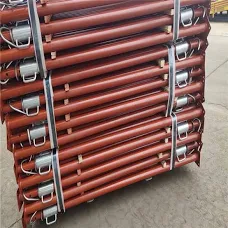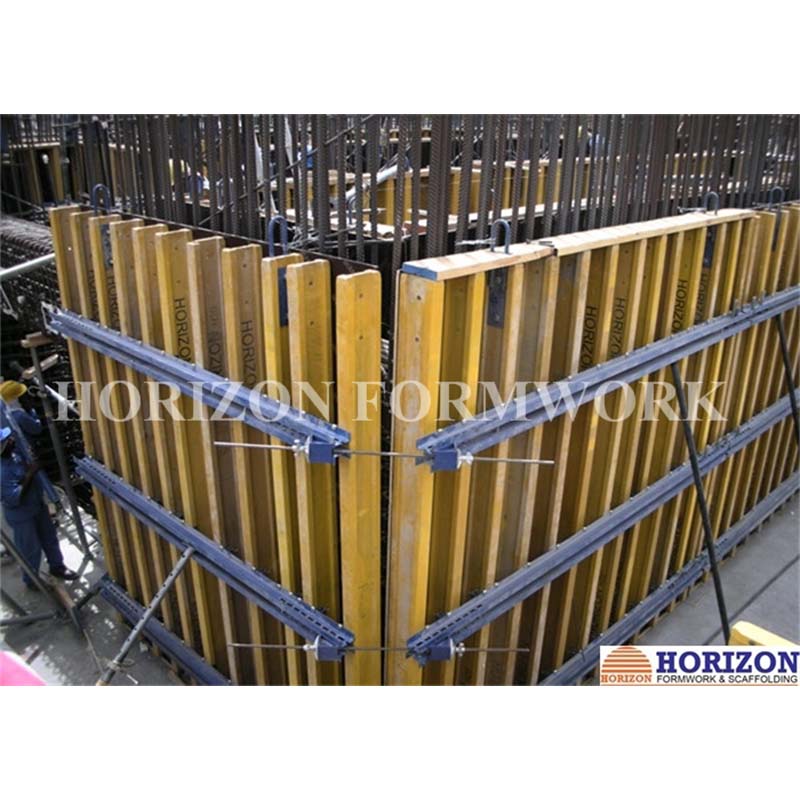May . 31, 2025 15:49 Back to list
Steel Slab Formwork Props High-Strength Adjustable Export Solutions
In this comprehensive guide to slab formwork support systems, we'll explore:
- Fundamentals of concrete slab support technology
- Engineering breakthroughs in modern support systems
- Comparative analysis of leading manufacturers
- Custom engineering solutions for specialized projects
- On-site application best practices
- Technical specifications comparison tables
- Selection criteria for industrial applications

(slab formwork prop)
Essential Support Technology: The Backbone of Slab Formwork Construction
Steel props for slab formwork serve as critical support elements in concrete construction, bearing structural loads during the curing process. These adjustable vertical supports ensure dimensional accuracy under concrete's immense pressure (typically 60-100 kN per prop). According to Global Construction Survey 2023, the slab formwork prop
sector has grown by 14% annually since 2020 due to increased high-rise construction.
Advanced load distribution mechanisms within modern props reduce concrete deformation rates to under 0.3mm/m, significantly improving surface quality. This technological evolution enables faster cycle times - crews can now pour subsequent floors every 4 days in high-rise projects, compared to 7-10 days with traditional systems.
Engineering Breakthroughs in Support Systems
Contemporary steel prop manufacturers employ cold-formed steel processing to increase tensile strength by 40-60% compared to traditional hot-rolled alternatives. This results in slender yet stronger components with enhanced stability performance. Patented thread designs on screw jacks ensure uniform load distribution, preventing sudden failures even at 120% of rated capacity.
The introduction of corrosion-resistant coatings extends product lifecycles by 200%. Zinc-aluminum alloy coatings withstand 1,000+ hours in salt spray tests, making these components ideal for coastal construction environments. Furthermore, integrated safety systems automatically lock at 90% capacity threshold, providing crucial redundancy during concrete placement operations.
Global Supplier Comparison Analysis
| Manufacturer | Max Load (kN) | Adjustment Range (mm) | Weight (kg/m) | Certifications |
|---|---|---|---|---|
| ScaffoldPro Systems | 90 | 1,900-3,900 | 4.1 | EN 1065, ISO 1461 |
| FormTech Global | 75 | 2,100-4,200 | 3.8 | BS 4074, ISO 9001 |
| SteelFrame Solutions | 105 | 1,800-3,800 | 5.2 | EN 1065, CE |
| EuroSupport Engineering | 95 | 2,200-4,000 | 4.3 | DIN 18173, ISO 1461 |
European manufacturers typically exceed standard load ratings by 15-20% while maintaining leaner profiles. The leading steel prop for slab formwork exporter from Germany utilizes micro-alloyed steel grades that offer 20% greater fatigue resistance. Production capabilities vary significantly between suppliers, with top-tier companies operating automated welding lines capable of 8,000 units daily output.
Specialized Engineering Solutions
Modern engineering challenges demand tailored approaches to slab support systems. Prestressed concrete designs require specialized jacking adapters capable of simultaneous adjustments across multiple props. For projects with seismic considerations, dampened props with hydraulic shock absorption reduce horizontal force transmission by 55%.
Height-adjustable U-head designs accommodate complex slab geometries, including waffle slabs and coffered ceilings. Digital monitoring options integrate pressure sensors that transmit real-time load data to project dashboards - a critical feature when working with delicate post-tensioning systems where overload tolerance is restricted to 2%.
Project Deployment and Performance
The Marina Bay Financial Centre in Singapore employed custom-engineered props supporting 130 MPa ultra-high-performance concrete slabs at 8.5m height. Project engineers reduced support density by 30% using optimized layout patterns while maintaining strict deflection limits below L/360. This approach saved 1,400 crew-hours during the 72-story construction.
In seismic zones like San Francisco, multi-directional locking systems proved essential during the Salesforce Tower construction. Hydraulic props with automatic load-leveling maintained tolerance within 0.15 degrees during minor seismic events. These sophisticated solutions reduced foundation stresses by 19% in computational models despite supporting composite slabs spanning 18 meters.
Technical Specifications and Testing Standards
International certification protocols govern slab support manufacturing. EN 1065 standards require minimum yield strength of 235 N/mm² with safety factors of 3:1 for standard applications. Load testing involves three critical procedures: static loading to 150% of capacity, cyclical loading at 75% capacity for 1,000 repetitions, and ultimate failure testing at minimum 300% rated capacity.
Tolerance requirements demand straightness variations below 1:1000 with flange thickness consistency within ±0.2mm. High-precision thread rolling maintains 0.5mm pitch accuracy across entire telescoping sections, ensuring smooth adjustments even under maximum loading conditions.
Partnering with Technical Experts for Your Formwork Needs
Selecting appropriate slab formwork props requires technical analysis of project-specific variables including concrete pressure curves and construction sequencing. Reputable steel prop for slab formwork companies employ structural engineers who create 3D formwork modeling simulations, accurately predicting load distribution patterns before site deployment.
Global manufacturers maintain regional technical centers equipped with load-testing facilities. The most advanced steel prop for slab formwork company typically provides comprehensive documentation including finite element analysis reports, third-party certification files, and detailed installation manuals with torque specifications for locking mechanisms.

(slab formwork prop)
FAQS on slab formwork prop
Q: What factors should I consider when choosing a steel prop for slab formwork exporter?
A: Prioritize exporters with certifications (e.g., ISO), proven industry experience, and positive client testimonials. Ensure they comply with international safety standards like EN 1065 or BS 4074 for quality assurance.
Q: How do steel prop for slab formwork companies ensure product durability?
A: Reputable companies use high-grade steel and advanced manufacturing techniques. They conduct rigorous load-bearing tests and provide corrosion-resistant coatings to extend product lifespan in harsh construction environments.
Q: What certifications should a reliable steel prop for slab formwork company have?
A: Look for ISO 9001 for quality management, ISO 45001 for safety, and compliance with EN 1065/BS 4074 standards. These certifications validate adherence to global construction material regulations.
Q: Can steel prop for slab formwork exporters customize products for specific projects?
A: Yes, most exporters offer adjustable lengths, load capacities (e.g., 20kN to 80kN), and modular designs. Provide project specifications like slab thickness and site conditions for tailored solutions.
Q: How do steel prop for slab formwork companies handle international logistics?
A: Top companies optimize shipping via containerization and provide documentation (CE markings, test reports). They often partner with trusted freight forwarders for timely delivery and customs clearance support.
-
Climbing Formwork Solutions for High-Rise Construction Efficiency
NewsJul.22,2025
-
Premium Table Formwork for Slab Construction | Reusable & OEM Support
NewsJul.22,2025
-
Heavy Duty Props EN1065 Certified - Adjustable Steel Shoring for Formwork
NewsJul.21,2025
-
Heavy Duty Tripod & Fork Head: Stable Camera Mount for Pro Shots
NewsJul.21,2025
-
High-Quality U Head Jack Scaffolding – Reliable Scaffolding Jack Head Manufacturer & Factory
NewsJul.08,2025
-
High-Quality I Beam H20 Leading Timber Beam H20 Material Factory, Exporters & Manufacturers
NewsJul.08,2025